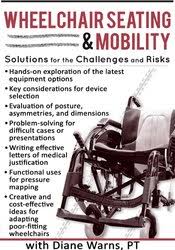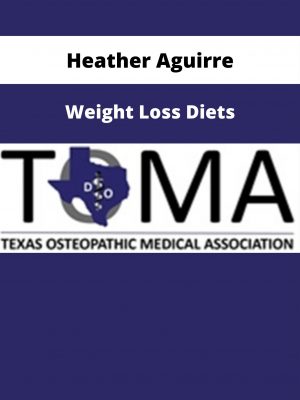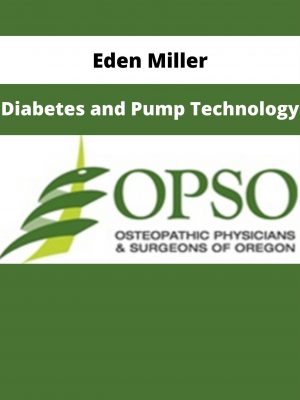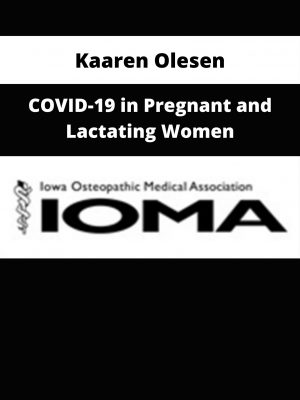Diane Warns – Wheelchair Seating & Mobility
$219 Original price was: $219.$62Current price is: $62.
Shopping Instructions:
- DISCOUNT 15% : SHOP15
- Product Delivery: Within 1 – 12 hours after purchase.
Available for Pre-Order. This product will be available within a few days.
Diane Warns – Wheelchair Seating & Mobility
- Hands-on exploration of the latest equipment options
- Key considerations for device selection
- Evaluation of posture, asymmetries, and dimensions
- Problem-solving for difficult cases or presentations
- Writing effective letters of medical justification
- Functional uses for pressure mapping
- Creative and cost-effective ideas for adapting poor-fitting wheelchairs
There are few courses available addressing the important topic of wheelchair seating and positioning.
- Get funding approval for equipment needed
- Learn advanced problem-solving skills for even your most challenging clients
- Hands-on learning opportunities with actual wheelchairs and positioning devices
- Leave with new abilities to assess for client comfort and safety
- Evaluate successful letters explaining medical justification
- New strategies for pressure mapping resources will be provided
This one-day course will provide you with the latest tools to increase confidence and proficiency when it comes to proper wheelchair fit, repairs, and support!
OUTLINE
Physical Evaluation
- Ability to ambulate and perform functional ADLs
- Ability to transfer
- History (including prior equipment and skin integrity issues)
- Tone
- At rest
- During activity
- Seated measurements
- Posture assessment such as scoliosis, pelvic obliquity
- Determining appropriate size of wheelchair and seating system
- ROM measurements
- Goniometric measurements to validate need and necessary accommodations
- Mat assessment for posture/fixed deformities
- Point of access assessment
- How the individual will drive the w/c (joystick, head control…)
- Ability to self-propel considerations
- Lightweight wheelchair and accessories to self-propel
- Adjustable axles to properly configure chair
Utilizing Pressure Mapping
- Documentation purposes
- Justification for more expensive pressure-relieving cushion or seating system
- Educational purposes
- Patient and family education/training
- Determining appropriate cushions
- Where adequate pressure relief is found
- Evaluating pressure relief results
Adapting a Poorly Fitting Wheelchair: Problem-Solving Solutions
- Identification of positioning issues in existing equipment
- Solutions to adapt the equipment to improve positioning and function
- Analyzing poor postures and determining causes as well as steps to rectify the issue
Types of Manual Wheelchairs and Appropriate Users
- Manual
- Adult – rigid, folding, standard, lightweight
- Pediatric – rigid, folding, Early Intervention (strollers)
- Tilt in Space
- Adult
- Pediatric
- Self-propel
Types of Power Wheelchairs
- Front wheel drive
- Mid wheel drive
- Rear wheel drive
- Programmable electronics
- Scooters
Seat Backs: Types and Indications
- Sling
- Planar
- Curved
- Curved with lateral support
- Custom with trunk laterals
Seat Cushions: Types and Indications
- Standard or basic foam
- Contoured
- Pressure relieving
- Custom molded
Head and Cervical Supports: Types and Indications
- Basic curved
- Contoured with posterior and lateral support
- Current equipment will be available to examine/trial
Transportation in a Motor Vehicle
- Frames and seating systems that have been crash tested
- WC19 transit approved
Would you like to receive Diane Warns – Wheelchair Seating & Mobility ?
Writing an Effective Letter of Medical Justification
- Information that must be included
- Tips to streamline
- Letter examples and case studies
OBJECTIVES
- Explain the different types of wheelchairs and who they are appropriate for.
- Distinguish which types of wheelchairs and seating systems insurances will fund.
- Determine how to measure someone for an appropriate wheelchair fit.
- Demonstrate how to write an effective letter of medical justification.
- Analyze real patient problems to guide the selection process for seating solutions.
- Differentiate between the various wheelchair cushions available for pressure relief purposes.
- Evaluate actual equipment types, wheelchairs, cushions and positioning aids.
Related products
HEALTH & MEDICAL
Regina Meredith – Conscious Media Network with Regina Meredith – Eric Pearl on The Reconnection
HEALTH & MEDICAL
Gaia—Creating-High-Voltage-Health-with-Glenn-Streeter-Open-Minds
HEALTH & MEDICAL
HEALTH & MEDICAL
HEALTH & MEDICAL
HEALTH & MEDICAL
Matthew Troester – How Much Sleep Do We Need and How to Get It
HEALTH & MEDICAL
HEALTH & MEDICAL












